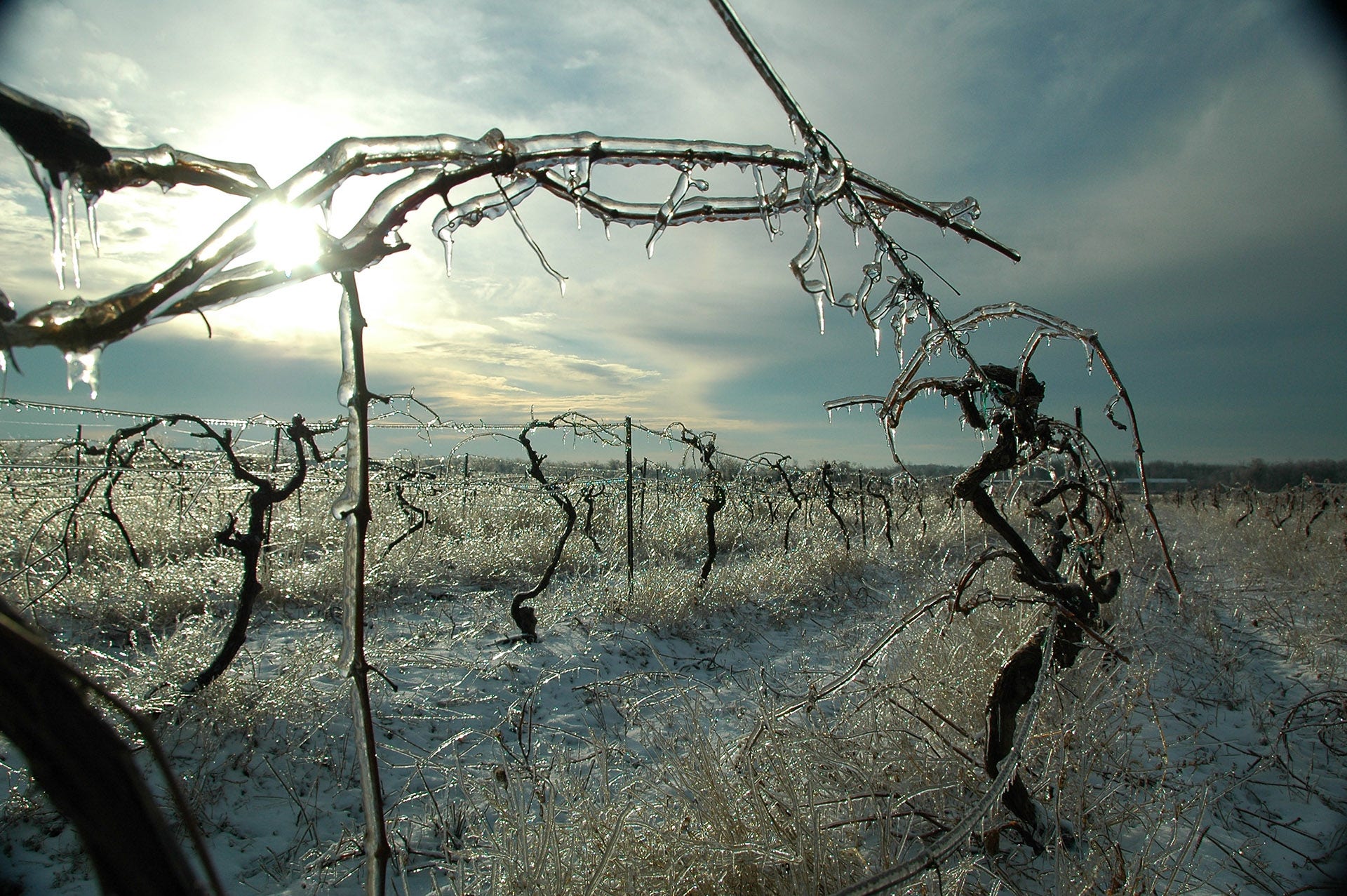During a blind tasting, one way to deduce where a wine may hail from is to assess the fruit’s character. If the fruit notes in a red wine taste very ripe or even jammy, it’s likely from a warm climate. If it tastes tart or delicate like a freshly picked raspberry, the wine probably came from a cooler climate.
It’s knowing the climate where a wine was produced that can help you find other bottlings you’ll like.
In recent years, vintners from Ontario, Canada to Austria have promoted “cool-climate wines” as a foil to the riper styles that have been popular for the last two decades. Many factors influence wine, from unusually hot weather during a particular harvest to a winemaker that intentionally shoots for opulence. Ultimately, however, climate plays the most pivotal role in a wine’s expression.
Winemakers know that wine grapes grow best in climates that aren’t too tropical, too arid or too reminiscent of arctic tundra. Most of the suitable climates are found between 30° – 50° latitude, both north and south.
Climate is also a function of elevation. Vineyards perched in the mountains of Trentino, Italy, for instance, enjoy cooler temperatures than fruit on the valley floor.
Other factors can include the amount of rainfall, humidity, and cooling or warming forces like cloud cover and wind patterns. Sonoma’s Petaluma Gap enjoys cooling gusts, while North Africa’s dry scirocco winds can cause Sicily’s temperatures to soar.

What is climate’s influence on a wine?
Grapes from cooler regions typically don’t ripen as quickly, which results in lower natural sugars and higher acidity. These wines may be described as elegant, nuanced and fresh. Tart fruits flavors like cranberry, raspberry, sour cherry and green apple are common, as are herbaceous notes, black pepper spice (especially in Syrah) and earthy, “forest floor” notes like those found in Pinot Noir from Burgundy.
Many grapes—Chardonnay, Chenin Blanc, Cabernet Sauvignon, Merlot and Malbec in particular—simply produce wildly different wines, depending on where they are grown.
For example, Cab Sauv from cool-climate Bordeaux often shows herbal, savory and gravely mineral character with drier tannins. From warmer Napa, it loses the herbal notes, also known as pyrazines, and takes on ripe blackberry fruit with voluptuous softer tannins.
But not all grapes thrive in all climates. Some are better suited to cooler zones, while others prefer heat and sun. The grapes most adept to cooler regions include Riesling, Sauvignon Blanc, Pinot Gris and Gewürtztraminer for whites, and Pinot Noir and Zweigelt for reds. Zinfandel, Grenache and Shiraz are common in warmer climates.

How does a cool climate affect wine?
Growers in cooler climates do face distinct challenges. Vines may be lower yielding, winters can harm or kill the vines and frost events are more common and destructive. Polar vortexes that seem to dominate the news during winter can claim entire vintages in the Finger Lakes and Ontario.
In the last few years, growers in Chablis, Burgundy and Bordeaux suffered devastating losses due to spring frost. Also, if the summer growing season is too short or cool, grapes may not ripen fully by harvest. That’s why many cooler regions allow chaptalization, the addition of sugar to must so alcohol levels increase during fermentation. Such factors tend to result in greater variations between vintages.
Other well-known cooler regions include Champagne, Italy’s Trentino-Alto Adige, Germany’s Mosel Valley, Central Otago in New Zealand, coastal Chile and California’s Sonoma Coast. Wines common to these regions bear patterns: lively Riesling from the Mosel, crisp Chardonnay from Chablis and grassy Sauvignon Blanc from Sancerre.
But “cool climate” can be a misnomer, especially the assumption that a region is too cold to ripen red grapes.
“No, it doesn’t snow in Canada all year round,” says J-L Groux, winemaker for Stratus in Canada’s Niagara Peninsula. At the peak of growing season, Niagara can be as hot as many warmer climates, he says.
“Niagara’s continental cool climate comes with a very hot growing season…followed by a long fall with cool nights,” says Groux, a Loire Valley expat who’s been making wine for 30 years. “This allows us to grow many late-ripening reds varieties such as Cabernet Franc that give us complex, fruit-driven wines with bright acidity, but without excessive green character or dry tannins.”

So, are warm-climate wines better?
Given all the troubles endured in cooler climates, warmer temperatures should be the way to go, right? More sunshine, consistent weather and a longer fall ripening period produce wines that possess fuller body and flavors. Grapes ripen faster and accumulate more sugars, which result in higher alcohol levels during fermentation. Darker fruit flavors often dominate like plums, blueberries, blackberries, and these wines can even exhibit chocolate notes.
But warm-climate viticulture has its problems, too. Growers often struggle to retain acidity in the grapes—which dips as sugar accumulates—and keeping their wines tasting fresh, rather than stewed, shapeless or flabby. In the winery, steps can be employed to help, like the addition of acid and even lowering alcohol levels, a controversial yet common practice in large commercial wineries. However, most winemakers prefer to achieve balance in the vineyard.
Also, grapes grown in hotter climates tend to have thicker skins, which contribute more tannin. The battle to ensure the resulting wine doesn’t need a decade of aging can add another burden.
Growing regions around the Mediterranean Sea—southern France, Spain and Greece—or which possess similar weather, are considered “warm climate.” The latter includes South Australia, Argentina, much of California, and South Africa.
Think about the grapes and styles from these regions: robust Shiraz from Barossa, rich southern Rhône Grenache-Syrah-Mourvèdre blends, dense Malbec from Uco Valley and boozy Zinfandel from California’s Lodi.
But these rules are not absolute. Growers uncover cooler sites in warmer regions, while climate change has allowed traditionally cool regions to produce bigger, riper wines seen rarely just decades ago. Increasingly, vintage conditions, viticultural choices and winemaking decisions blur the lines between cool and warm regions.
“A recent study shows that [Niagara] vineyards are experiencing the fastest ‘warming-up’ effect among the world’s cool-climate wine regions,” says Groux. “It certainly feels that way to me after growing wines in Niagara over the last 30 years. To sum it up, while many perceive our cool climate as a weakness, it is, in fact, our greatest strength.”
Delicate versus powerful. Tart versus ripe. Cool climate versus warm climate. No one style is superior to the other. There’s room for both at your table.
Last Updated: May 4, 2023















